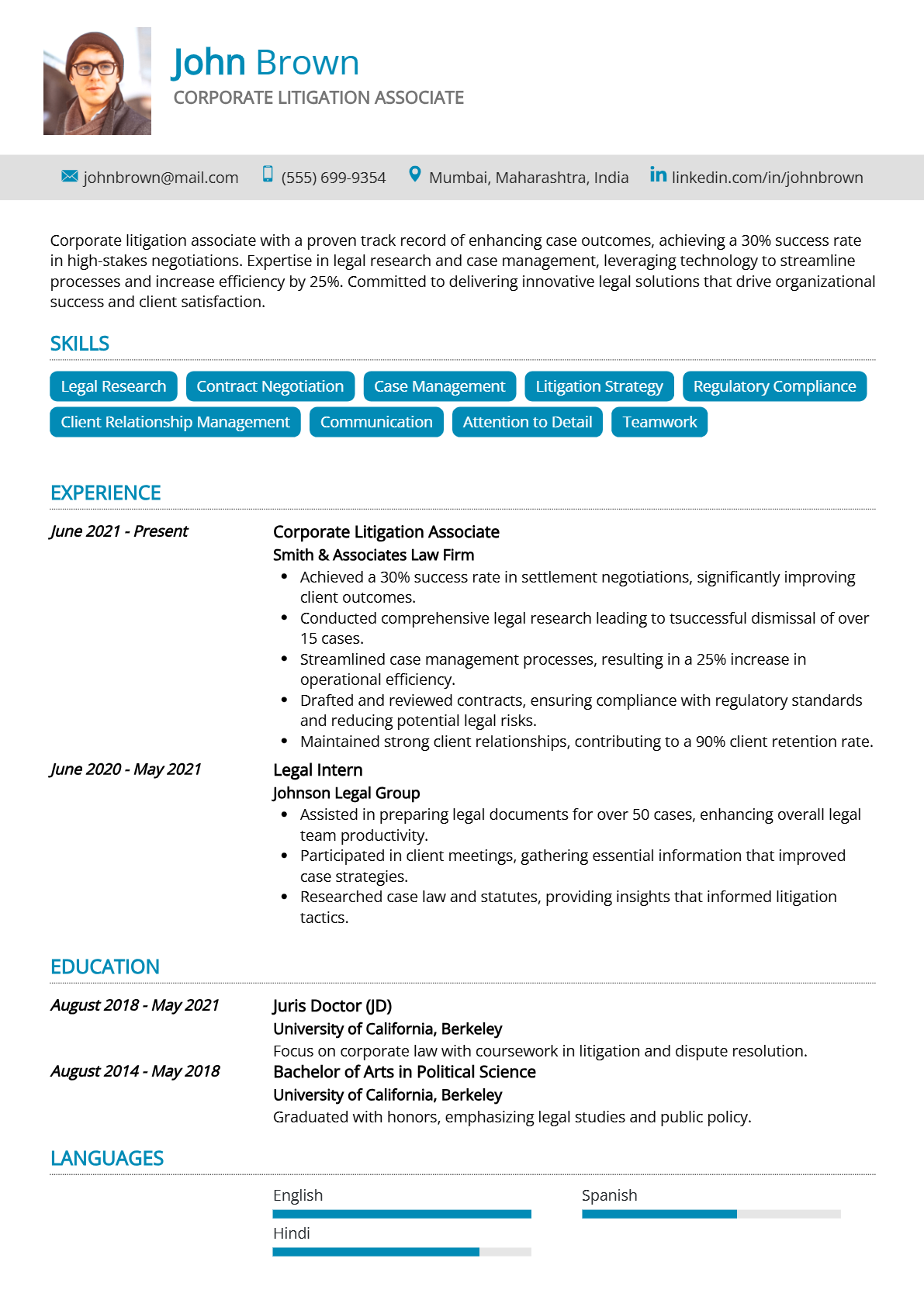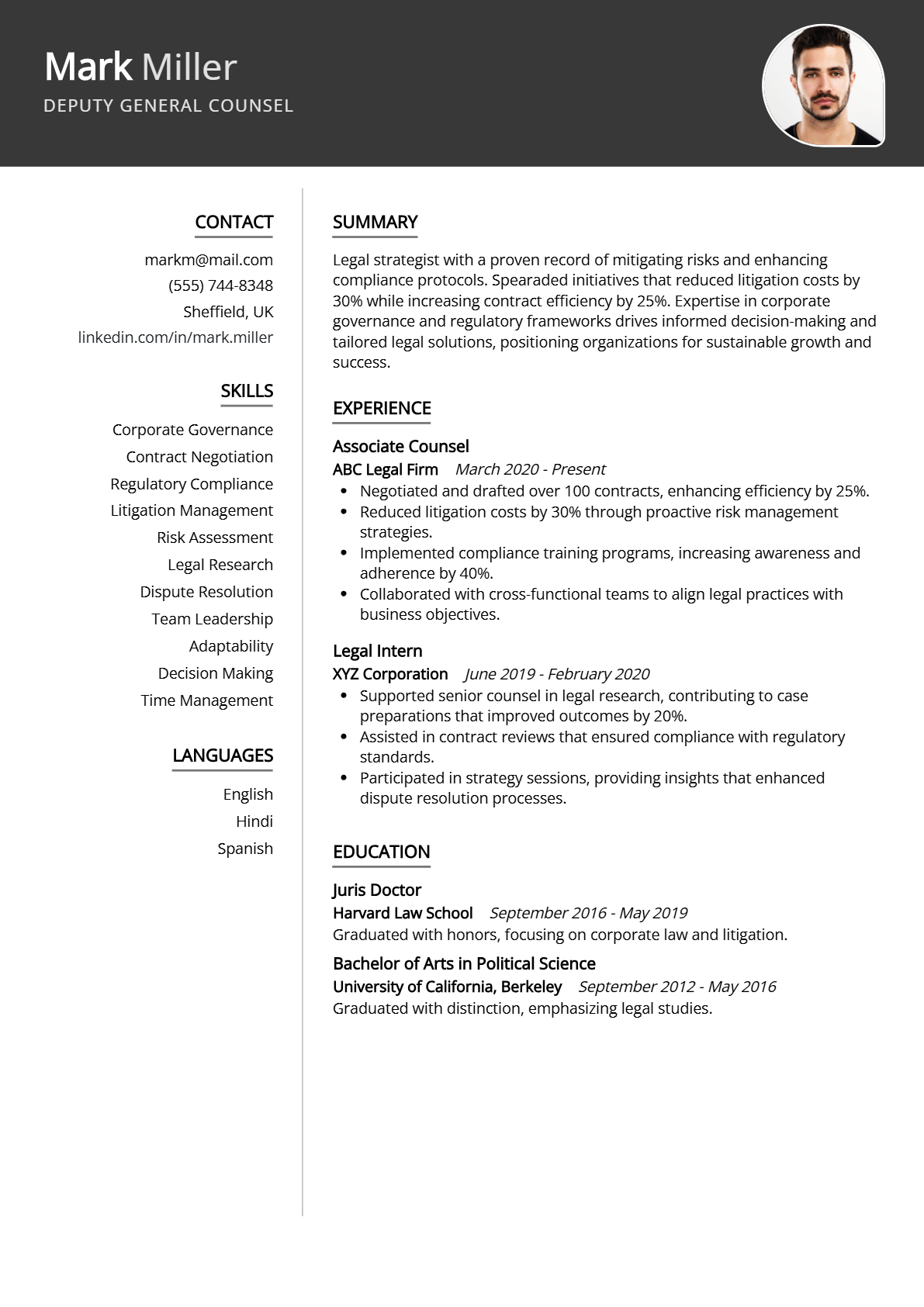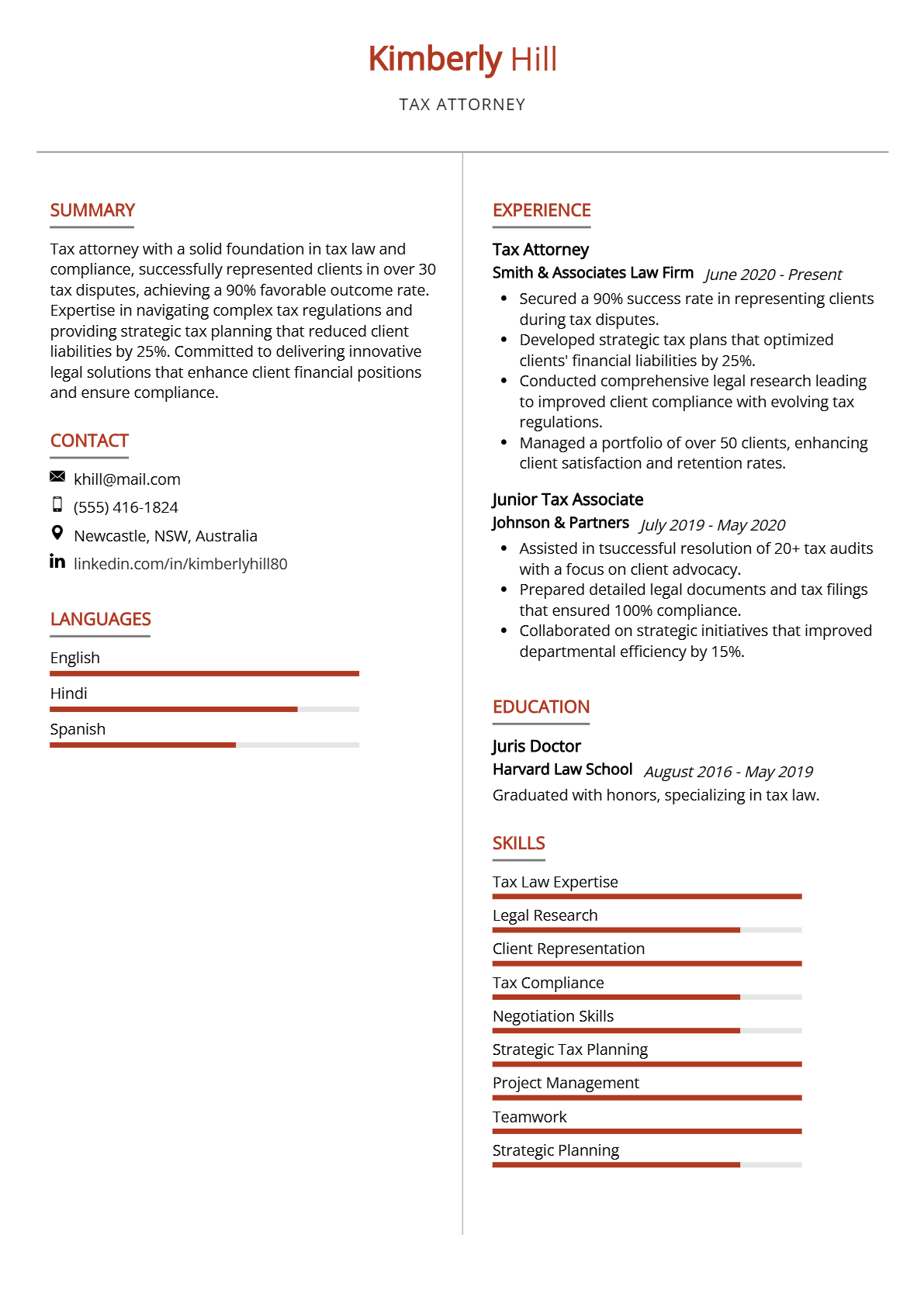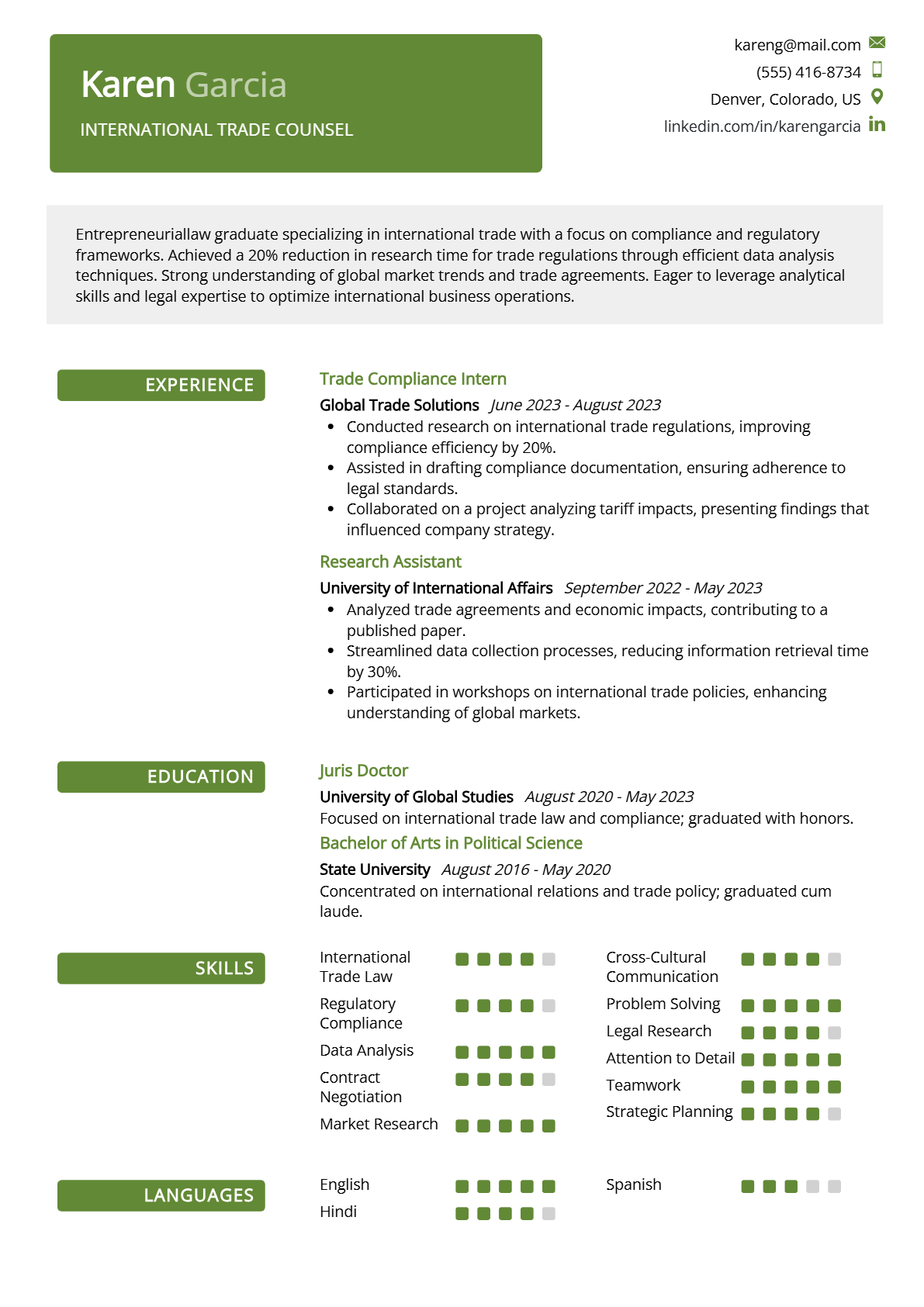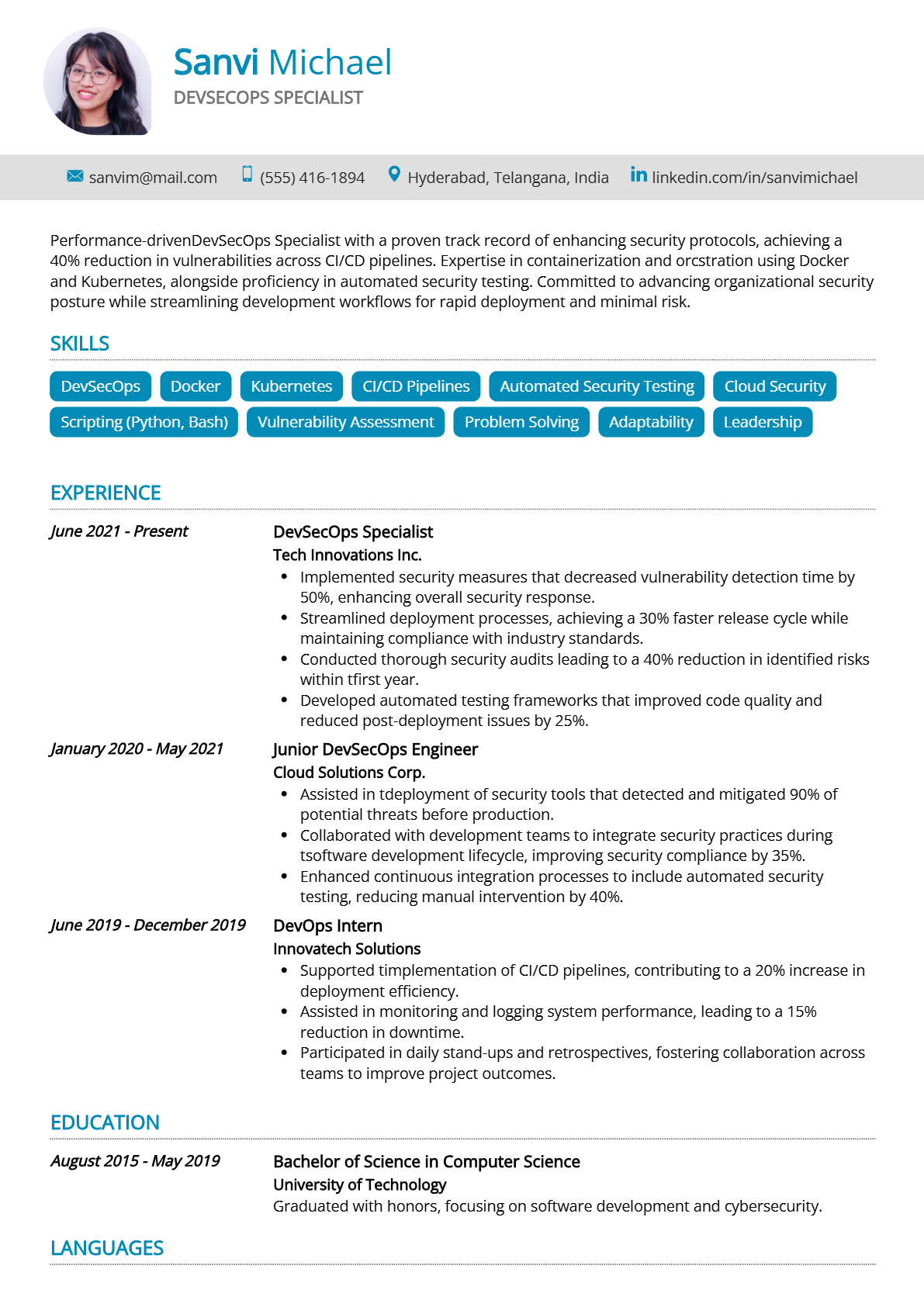
18 Accounting Manager Resume Examples for 2025
The role of an Accounting Manager is pivotal in ensuring the financial health and transparency of an organization. This position involves overseeing financial reporting, maintaining compliance with regulations, and managing accounting teams to produce accurate financial statements. In today’s job market, where businesses face increasing scrutiny and competition, skilled Accounting Managers are essential for strategic decision-making and maintaining investor confidence. This article aims to provide insights into crafting a standout resume tailored for aspiring Accounting Managers, highlighting key skills, accomplishments, and best practices to enhance employability in this vital field.
- Accounting Manager resume examples
- How to format a Accounting Manager resume
- How to write your Accounting Manager resume experience
- How to list your hard skills and soft skills on your resume
- How to list your certifications and education on your resume
- How to write your Accounting Manager resume summary or objective
- Additional sections for a Accounting Manager resume
- Key takeaways for writing a professional Accounting Manager resume
- Frequently Asked Questions
Accounting Manager resume examples
Accounting Manager resume examples serve as a valuable resource for job seekers aiming to land a position in this competitive field. By analyzing these examples, candidates can gain insights into effective formatting, essential skills, and impactful language that demonstrate their qualifications. Understanding what makes a standout resume for an Accounting Manager role can significantly enhance a candidate’s ability to showcase their experience and attract the attention of hiring managers.
Accounting Manager Resume

Why This Resume Works
This resume effectively targets the Accounting Manager position by highlighting key skills such as Financial Reporting and GAAP Compliance, which are crucial in this role. The structured format presents a clear career progression from Staff Accountant to Accounting Manager, demonstrating relevant experience over seven years. Its use of industry-specific keywords ensures ATS compatibility, while the strategic presentation of achievements in budget management and cost reduction showcases measurable success, making it stand out to hiring managers seeking a results-driven leader in accounting.
Senior Accounting Manager Resume

Why This Resume Works
This resume effectively positions the candidate for a Senior Accounting Manager role by showcasing relevant skills such as financial reporting, budgeting, and ERP systems expertise. The structured format enhances readability, highlighting key achievements and progressive experience from Junior Accountant to Senior Accounting Manager. Its use of industry-specific keywords ensures ATS compatibility, increasing visibility to recruiters. Additionally, the strategic presentation of accomplishments in team leadership and regulatory compliance demonstrates the candidate’s capability to drive results in high-stakes accounting environments.
Financial Control Manager Resume

Why This Resume Works
This resume effectively showcases the candidate’s qualifications for a Financial Control Manager position by highlighting relevant skills such as financial reporting, budget management, and SAP expertise. With seven years of experience in both managerial and analytical roles, it demonstrates a strong foundation in forecasting and risk management. The structured format enhances readability, while strategic keyword usage ensures ATS compatibility, making it easily discoverable.
Senior Accounting Leader Resume

Why This Resume Works
This resume effectively positions the candidate for a Senior Accounting Leader role by prominently showcasing key skills such as financial analysis and regulatory compliance, essential for strategic decision-making. The format is structured to highlight relevant experience, including leadership roles that demonstrate team management capabilities. Its ATS-friendly design utilizes industry-specific keywords, ensuring visibility in applicant tracking systems. Additionally, the strategic presentation of achievements related to budgeting and ERP systems underscores the candidate’s impact in previous roles, making them an ideal fit for the position.
Entry-Level Financial Analyst Resume

Why This Resume Works
This resume effectively positions the candidate for an Entry-Level Financial Analyst role by highlighting essential skills like financial modeling and data analysis, which are crucial for the position. The clear format and structured layout enhance readability, allowing hiring managers to quickly identify relevant qualifications. Additionally, the use of industry-specific keywords ensures ATS compatibility, increasing visibility in applicant tracking systems. By showcasing achievements related to budget forecasting and Excel proficiency, the resume strategically demonstrates the candidate’s readiness to contribute meaningfully in a financial analysis environment.
Accounting Manager with ERP Specialization Resume

Why This Resume Works
This resume effectively highlights the candidate’s relevant skills and experience for the Accounting Manager with ERP Specialization position. By emphasizing expertise in ERP systems implementation and financial analysis, it aligns directly with job requirements. The structured format allows for easy readability, showcasing a clear career progression from Junior to Senior Accountant, culminating in a managerial role. Additionally, the inclusion of strategic achievements enhances credibility while ensuring ATS compatibility through targeted keywords specific to accounting and ERP functions.
Corporate Tax Manager Resume

Why This Resume Works
This resume effectively positions the candidate for a Corporate Tax Manager role by highlighting relevant expertise in corporate tax compliance and strategic tax planning, backed by eight years of progressive experience. The structured format allows for easy navigation of key skills and accomplishments, ensuring clarity for hiring managers. Additionally, the use of industry-specific keywords enhances ATS compatibility, while quantifiable achievements related to financial reporting and regulatory analysis demonstrate the candidate’s impact in previous roles, making a compelling case for their suitability in this position.
Forensic Accounting Specialist Resume

Why This Resume Works
This resume effectively positions the candidate for a Forensic Accounting Specialist role by highlighting essential skills such as forensic analysis and fraud detection, directly relevant to the job. With approximately seven years of experience, including a previous role as a Junior Forensic Accountant, it showcases a solid career progression. The structured format enhances readability, ensuring ATS compatibility by incorporating industry-specific keywords. Additionally, strategic presentation of measurable achievements underlines the candidate’s impact in financial reporting and regulatory compliance, making them an appealing choice for employers.
Senior Finance Director Resume

Why This Resume Works
This resume effectively positions the candidate for a Senior Finance Director role by highlighting essential skills such as Financial Analysis and Risk Management, directly relevant to the position. With six years of progressive experience in finance leadership, it demonstrates a clear career trajectory. The structured format enhances readability, ensuring key competencies are easily identifiable, which aids ATS compatibility. Additionally, strategic achievements are showcased, emphasizing quantifiable impacts on budgeting and financial modeling, making the candidate’s contributions compelling and aligned with industry expectations.
Accounting Operations Manager Resume

Why This Resume Works
This resume effectively highlights the candidate’s suitability for the Accounting Operations Manager position by showcasing relevant skills such as Financial Reporting and ERP Systems, paired with eight years of progressive experience. The structured format emphasizes key competencies and achievements, making it easy for hiring managers to identify qualifications quickly. Additionally, the use of industry-specific terminology enhances ATS compatibility, ensuring visibility in automated screenings. Strategic presentation of accomplishments in process improvement and budget management further demonstrates the candidate’s capacity to drive operational efficiency within accounting teams.
Assistant Controller Resume

Why This Resume Works
This resume effectively positions the candidate for the Assistant Controller role by highlighting relevant skills such as Financial Reporting and Variance Analysis, essential for financial oversight. The structured format facilitates easy navigation, showcasing three years of progressive experience in finance roles. It is optimized for ATS compatibility through keyword usage, ensuring it ranks well in applicant tracking systems. Additionally, the strategic presentation of achievements related to Budgeting & Forecasting and Process Improvement demonstrates the candidate’s ability to drive financial efficiency, making them a strong fit.
Senior Audit Manager Resume

Why This Resume Works
This resume effectively positions the candidate for a Senior Audit Manager role by highlighting key skills like Regulatory Compliance and Risk Assessment, crucial for high-level audit responsibilities. With approximately seven years of relevant experience, it demonstrates progressive career growth. The structured format enhances clarity, making it easy for hiring managers to identify qualifications quickly. Additionally, its strategic use of industry-specific keywords ensures ATS compatibility, while the clear presentation of achievements showcases measurable impact in previous roles, reinforcing the candidate’s suitability for the position.
Financial Reporting Manager Resume

Why This Resume Works
This resume effectively highlights the candidate’s extensive experience as a Financial Reporting Manager and Financial Analyst, showcasing seven years of relevant expertise. The inclusion of key skills such as GAAP & IFRS compliance and variance analysis directly aligns with the requirements of the position. Its clear format enhances readability, making it ATS-friendly by incorporating industry-specific keywords. By strategically presenting achievements related to budgeting and forecasting, the resume underscores the candidate’s capacity to drive financial performance, making it compelling for hiring managers in this field.
Chief Accounting Officer Resume

Why This Resume Works
This resume effectively positions the candidate for the Chief Accounting Officer role by showcasing extensive experience in financial reporting, GAAP compliance, and risk management over 12 years. The structured format highlights key skills prominently, ensuring clarity and ease of reading for hiring managers. It is optimized for ATS compatibility through relevant keywords tailored to the accounting industry. Additionally, strategic presentation of achievements in budgeting and taxation strategy underscores the candidate’s leadership capabilities, making a compelling case for their fit in this high-level position.
Treasury Manager Resume

Why This Resume Works
This resume effectively highlights the candidate’s extensive experience as a Treasury Manager and Assistant Treasury Manager, showcasing seven years of relevant expertise. The inclusion of key skills such as Cash Management and Financial Forecasting directly aligns with the position’s requirements. Its clear format and structured layout enhance readability, ensuring that both hiring managers and ATS software can easily identify qualifications. Additionally, the strategic presentation of achievements emphasizes measurable successes in liquidity management and risk assessment, making the candidate stand out in a competitive field.
Cost Accounting Manager Resume

Why This Resume Works
This resume effectively showcases the candidate’s qualifications for a Cost Accounting Manager position by highlighting relevant skills such as cost analysis and financial reporting, which are critical in this role. With approximately seven years of progressive experience in cost accounting, the structure presents a clear career trajectory. The format adheres to ATS compatibility by incorporating industry-specific keywords. Additionally, strategic presentation of achievements emphasizes budget management and variance analysis, demonstrating the candidate’s ability to drive financial efficiency and support organizational goals.
International Tax Accountant Resume

Why This Resume Works
This resume effectively positions the candidate for an International Tax Accountant role by highlighting relevant skills such as international tax compliance and analytical abilities essential for navigating complex tax regulations. The structured format enhances readability, ensuring key information is easily accessible. It incorporates industry-specific keywords to optimize ATS compatibility, increasing visibility during screenings. Additionally, the candidate’s experience as a Tax Intern and Assistant showcases practical knowledge and competencies in tax preparation software, crucial for success in this specialized field.
Financial Systems Analyst Resume

Why This Resume Works
This resume effectively highlights relevant experience and skills for a Financial Systems Analyst position, showcasing a solid background with approximately six years in financial analysis roles. The inclusion of key competencies like SAP and Oracle ensures it resonates with industry standards and enhances ATS compatibility. Its structured format clearly delineates achievements, emphasizing data analytics and reporting tools, which are crucial for the role. This strategic presentation not only underscores the candidate’s expertise but also aligns closely with the expectations of hiring managers in this field.
How to format a Accounting Manager resume
Proper formatting is crucial for an Accounting Manager resume, as it enhances readability and professionalism. A well-structured resume format not only highlights your qualifications but also reflects your attention to detail—a key trait in the accounting field.
- Use clear headings and subheadings to organize sections like Experience, Education, and Skills, making it easy for hiring managers to scan your qualifications quickly.
- Utilize bullet points for listing job responsibilities and achievements, ensuring each point is concise and impactful to showcase your key contributions in previous roles.
- Keep consistent font styles and sizes throughout your resume to maintain a professional appearance; typically, a 10-12 point font for body text works best.
- Incorporate white space strategically; margins of at least 0.5 inches and generous spacing between sections improve readability and prevent your resume from looking cluttered.
- Prioritize your most relevant experience at the top of each section, using a reverse chronological order to highlight your recent achievements, aligning them with the requirements of the accounting manager position.
How to write your Accounting Manager resume experience
Effectively presenting work experience on an Accounting Manager resume is crucial, as this section showcases your professional journey, skills, and achievements relevant to the role. Employers seek candidates who can demonstrate their contributions to financial management, team leadership, and strategic decision-making, all of which are essential in this position.
A well-structured experience section not only highlights your expertise but also helps you stand out in a competitive job market. Employers want to see quantifiable results and specific responsibilities that reflect your ability to drive financial success and ensure compliance with accounting standards.
Handled accounting tasks and ensured reports were done on time.
Led a team of 4 in managing a $5M budget, improving reporting accuracy by 30% and reducing month-end close time by 20% through process enhancements.
How to list your hard skills and soft skills on your resume
In today’s competitive job market, an Accounting Manager’s resume must effectively showcase both hard and soft skills. Hard skills demonstrate the technical expertise required for the role, such as proficiency in accounting software and financial analysis. Meanwhile, soft skills highlight the interpersonal abilities that enable effective team management and communication. A balanced combination of these skill sets can significantly enhance an applicant’s appeal to potential employers, making them a well-rounded candidate for the position.
Hard Skills:
- Financial Reporting: Ability to prepare accurate financial statements.
- Tax Compliance: Knowledge of tax regulations and compliance requirements.
- Budgeting: Expertise in creating and managing budgets.
- Accounting Software: Proficiency in programs like QuickBooks and SAP.
- Data Analysis: Skill in analyzing financial data to identify trends.
- Auditing: Experience in conducting internal and external audits.
- Accounts Payable/Receivable: Management of incoming and outgoing payments.
- General Ledger: Mastery of maintaining and reconciling the general ledger.
- Financial Forecasting: Ability to project future financial performance.
- Cash Flow Management: Expertise in monitoring and optimizing cash flow.
- Cost Accounting: Knowledge of cost control and analysis techniques.
- Regulatory Knowledge: Understanding of financial regulations and standards.
- Financial Modeling: Skill in creating financial models for decision-making.
- Payroll Management: Experience in overseeing payroll processes and compliance.
- Strategic Planning: Ability to align financial goals with business strategy.
Soft Skills:
- Leadership: Ability to inspire and guide a team effectively.
- Communication: Strong verbal and written communication skills.
- Problem-Solving: Aptitude for identifying issues and developing solutions.
- Attention to Detail: Precision in financial reporting and analysis.
- Time Management: Skill in prioritizing tasks to meet deadlines.
- Adaptability: Flexibility to adjust to changing financial environments.
- Collaboration: Ability to work well with cross-functional teams.
- Critical Thinking: Capacity to assess situations and make informed decisions.
- Negotiation: Skill in negotiating terms with vendors and clients.
- Emotional Intelligence: Awareness of team dynamics and interpersonal relationships.
- Conflict Resolution: Ability to mediate and resolve disputes effectively.
- Customer Service: Commitment to providing excellent service to clients.
- Creativity: Innovative thinking for improving processes and systems.
- Integrity: Strong ethical standards in financial practices.
- Mentoring: Ability to guide and develop junior team members.
How to list your certifications and education on your resume
When presenting certifications and education on an Accounting Manager resume, it is essential to list your qualifications in reverse chronological order. This ensures that the most recent and relevant credentials are easily visible. Include certifications such as CPA (Certified Public Accountant) or CMA (Certified Management Accountant), as these are highly regarded in the accounting field and demonstrate your expertise in financial management and strategic decision-making.
Additionally, your educational background should highlight degrees in accounting, finance, or related fields. Mention the name of the institution, the degree earned, and the graduation date. If you graduated with honors or received any relevant distinctions, include those details to enhance your credibility and showcase your commitment to excellence in the profession.
Graduated from some university. Have a CPA certification and several courses in finance.
Bachelor of Science in Accounting, University of California, 2020. Certified Public Accountant (CPA), 2021.
How to write your Accounting Manager resume summary or objective
A strong resume summary or objective is crucial for an Accounting Manager position as it provides a quick snapshot of your qualifications and career goals. A summary highlights your extensive experience and skills, making it suitable for seasoned professionals, while an objective statement outlines your career aspirations, often preferred by entry-level candidates or those changing careers.
Looking for a job in accounting. I have experience in finance and want to work at a reputable company.
Detail-oriented Accounting Manager with over 8 years of experience leading teams and managing financial operations, seeking to leverage expertise in financial analysis and compliance at a forward-thinking firm to drive efficiency and accuracy.
Additional sections for a Accounting Manager resume
Incorporating additional sections into your Accounting Manager resume can significantly enhance its impact. These sections provide a comprehensive view of your qualifications, showcasing not just your technical skills but also your leadership abilities and relevant achievements.
- Certifications: Highlighting certifications such as CPA or CMA demonstrates your commitment to professional development and expertise in accounting principles, making you a more attractive candidate.
- Professional Affiliations: Listing memberships in accounting organizations reflects your engagement with the industry and keeps you connected to current trends, showcasing your dedication to ongoing learning.
- Key Achievements: Including specific accomplishments, like improving financial reporting processes or reducing costs by a certain percentage, quantifies your contributions and illustrates your effectiveness in the role.
- Technical Skills: A section detailing your proficiency in accounting software (e.g., QuickBooks, SAP) or data analysis tools highlights your technical expertise, which is crucial for an Accounting Manager’s success.
- Leadership Experience: Showcasing roles where you led teams or projects emphasizes your ability to manage and motivate others, a vital skill for an Accounting Manager responsible for overseeing financial operations.
Key takeaways for writing a professional Accounting Manager resume
- Focus on quantifiable achievements, such as improving financial reporting accuracy by 30% or reducing month-end closing time by 25% to showcase your impact.
- Utilize relevant resume templates to ensure your layout is professional and highlights key skills like budgeting, forecasting, and team leadership effectively.
- Highlight your proficiency with accounting software and tools, as familiarity with programs like QuickBooks and SAP is crucial for an Accounting Manager role.
- Include certifications such as CPA or CMA, as these credentials demonstrate your expertise and commitment to the accounting profession, enhancing your credibility.
- Consider using an ai resume builder to streamline the writing process and receive tailored suggestions for optimizing your resume based on industry trends.
Frequently Asked Questions
How long should my Accounting Manager resume be?
Your Accounting Manager resume should ideally be one to two pages long. If you have extensive experience, two pages can help detail your accomplishments and skills effectively. However, if you have less than ten years of experience, aim for one page to keep it concise and focused. Prioritize the most relevant and impactful information, ensuring that hiring managers can quickly grasp your qualifications and contributions to previous roles.
What is the best format for a Accounting Manager resume?
The best format for an Accounting Manager resume is the reverse-chronological format. This structure highlights your most recent positions and achievements first, making it easier for employers to see your career progression and relevant experience. Use clear headings and bullet points to organize your information effectively. Additionally, include a summary statement at the top to provide a quick overview of your skills and qualifications, tailored specifically to the role you are applying for.
What should I highlight on my Accounting Manager resume to stand out?
To stand out as an Accounting Manager, highlight your leadership abilities, technical skills, and relevant achievements. Emphasize your experience in financial reporting, budgeting, and compliance. Showcase any certifications, such as CPA or CMA, and mention your proficiency with accounting software like QuickBooks or SAP. Additionally, include examples of how you have improved processes or contributed to cost savings in previous roles, as tangible results can significantly enhance your appeal to potential employers.
What are some ways to quantify my experience on my Accounting Manager resume?
Quantifying your experience is crucial to demonstrating your impact as an Accounting Manager. Use specific metrics such as the size of budgets managed, the percentage of cost reductions achieved, or the number of team members you supervised. For example, mention “managed a $2M budget” or “led a team of 10 accountants.” Additionally, include any improvements in reporting accuracy or efficiency, stating “reduced financial reporting time by 30%,” to provide clear evidence of your contributions and effectiveness.



















